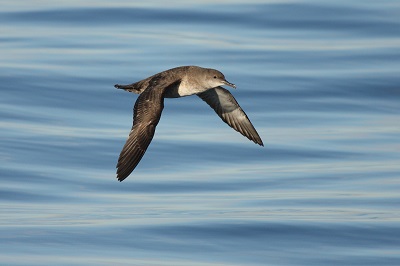Foraging distribution of flying seabirds is constrained by environmental factors influencing individual decision-making. This must be particularly true during the breeding period, when individuals face additional limitations imposed by their central-place foraging behaviour.
A research team used GPS data loggers and Argos PTTs to track the foraging flights of Balearic shearwaters (Puffinus mauretanicus) during the chick-rearing period of 2011–2014 in the Balearic Islands (Western Mediterranean). They identified main areas used by tracked birds and characterised their productivity patterns. Based on a spatial seascape approach of flight costs varying with time, shaped by environmental processes as winds, the team also estimated flight costs to reach foraging grounds in outward and return trips from the colony. Individuals repeatedly used the closest areas on the Iberian continental shelf. However, sporadic and favourable wind conditions facilitated low-cost flight to more distant and equally productive areas of the western North African shelf.
The study is the result of the work carried out in the islets of the west of Ibiza since 2011. It is a collaboration between SEO / BirdLife, AZTI and the Initiative for Research on Biodiversity (IRBI), in which other entities have collaborated such as EBD, ICM (CSIC), LPO (BidLife, France) and CNRS (France). The work was supported by several projects, highlighting Interreg FAME, LIFE + INDEMARES and support from the Ibiza Preservation Fund.
outreach[at]ebd.csic.es
Referencia:
Isabel Afán et al. Where to head: environmental conditions shape foraging destinations in a critically endangered seabird. Marine Biology. https://doi.org/10.1007/s00227-021-03830-1
https://doi.org/10.1007/s00227-021-03830-1

 Open Call for Research Projects in ICTS-Doñana!
Open Call for Research Projects in ICTS-Doñana!



